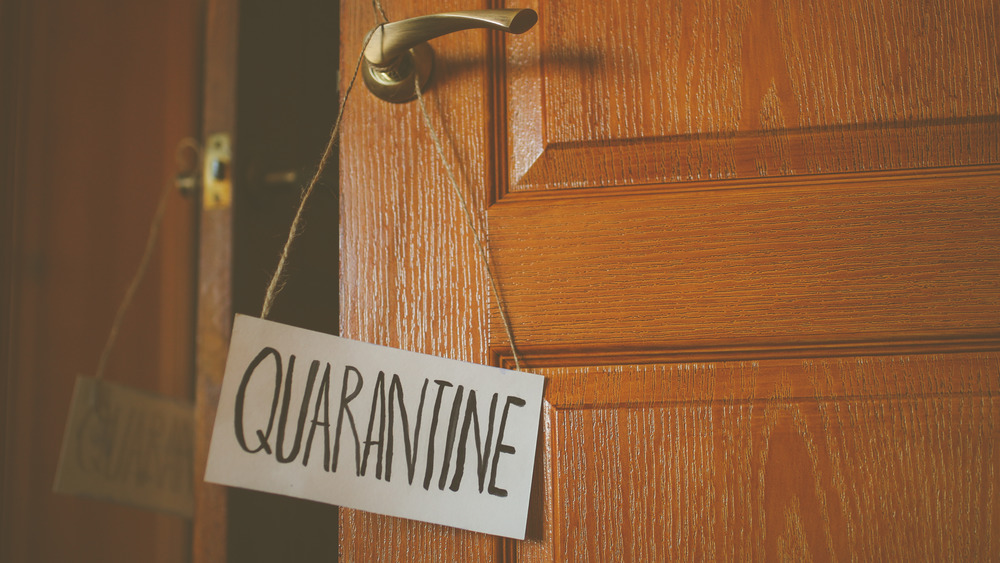Quarantine Vs Isolation: What's The Difference?
The COVID-19 pandemic has us looking at the movie Outbreak with a whole new set of eyes. Perhaps the events of the movie weren't all that far-fetched: a rapidly spreading pathogen, strict isolation protocols, and government-enforced regional quarantines. While they may be new terms to many this year, quarantine and isolation procedures are nothing new to the public health sector.
The term "quarantine" actually comes from the Italian word quaranta giorni, meaning 40 days, and its origins come from the handling of the bubonic plague centuries ago (via Centers for Disease Control and Prevention). At that time, ships that arrived in Venice from known infected ports were required to remain in port for 40 days before disembarking, in an attempt to reduce transmission of the plague. Isolation techniques are found even earlier in history, particularly when dealing with diseases such as leprosy (via History). Despite these terms being around for centuries, they are still commonly misused in the modern era. So let's get down to the nitty-gritty.
According to the CDC, the main distinction between isolation and quarantine is infectious status. Isolation refers to separating sick and infected individuals from people who are not sick. Quarantining refers to separating individuals who were exposed to a contagious disease from healthy people and monitoring them to see if they develop the disease. So effectively, if you test positive for COVID-19, you need to isolate. If you've been around someone who has tested positive but are not yet yourself positive, you need to quarantine.
Current isolation and quarantine guidelines for COVID-19
Currently, the CDC recommends all individuals who have received a positive COVID-19 test, regardless of symptomology, go into isolation. If these individuals are able to recover at home, they are advised to stay in a separate room from other household members, use a separate bathroom, wear a mask in the home if they are unable to maintain strict isolation, and avoid using household items like reusable cups and utensils.
For symptomatic individuals, the CDC recommends ending isolation only if all of the following criteria are met; 10 days have passed since symptom onset, at least 24 hours without a fever and no use of fever-reducing medication, and an overall improvement in symptoms. For asymptomatic individuals, the guidelines loosen a bit — they are allowed to end isolation if it's been 10 days since their positive test and they still have not developed any symptoms.
As far as quarantine measures for COVID-19, the CDC recommends all individuals who have had close contact with a known COVID-19 positive patient quarantine themselves and monitor for symptoms for 14 days. Recent updates to the guidelines have accommodated individuals who simply cannot quarantine for the full 14 days. Early quarantine release can occur 10 days after exposure with no COVID testing and no development of symptoms or seven days after known contact, with a negative test taken on day five or later.
While we continue to learn more about the SARS-CoV-2 virus, we can always count on isolation and quarantine measures being a part of our public health system. So, make necessary preparations in case you ever find yourself needing to isolate or quarantine!

